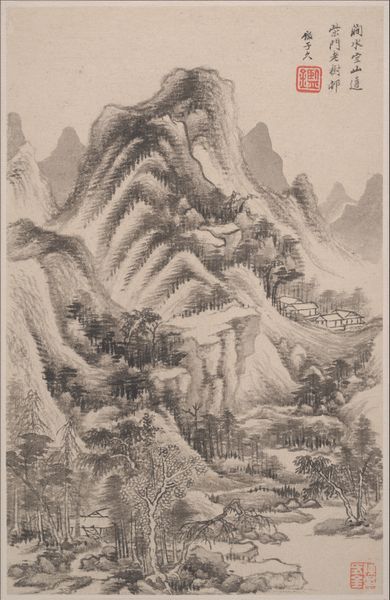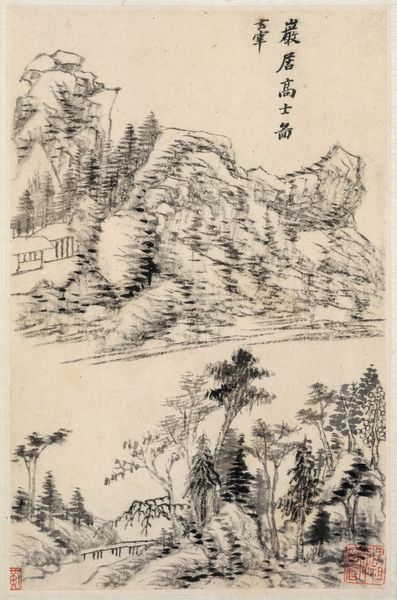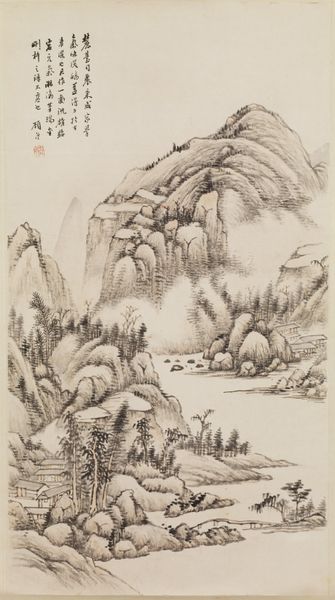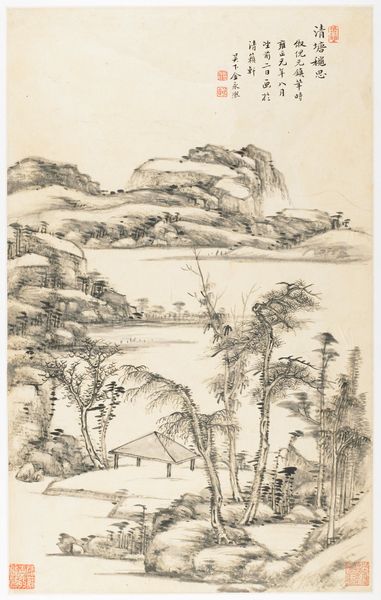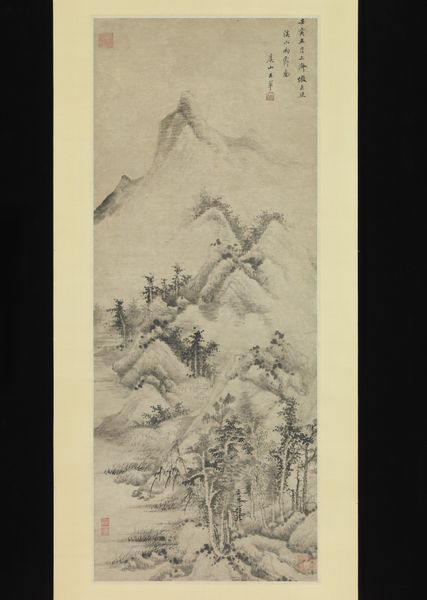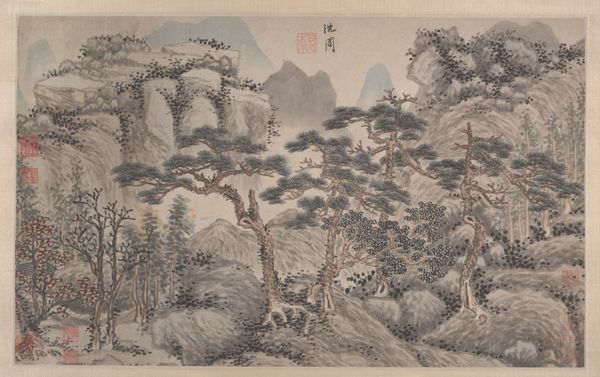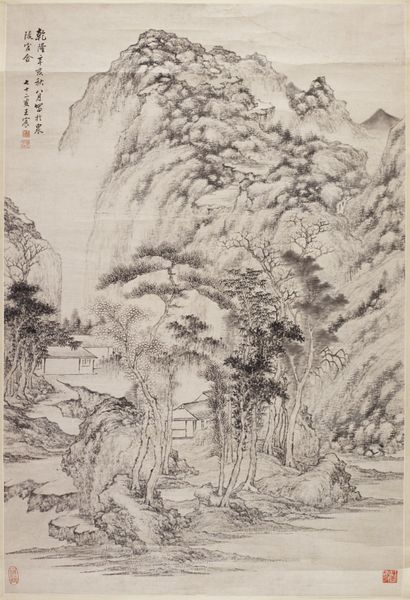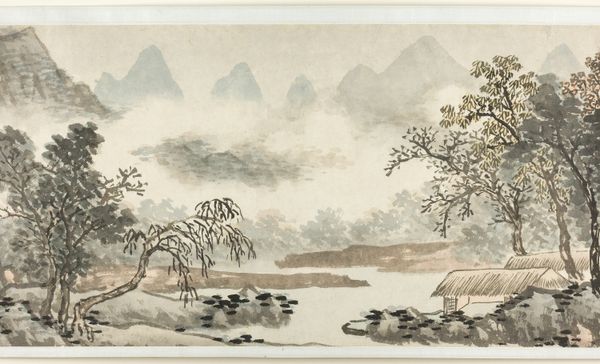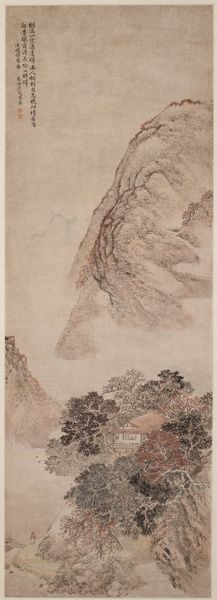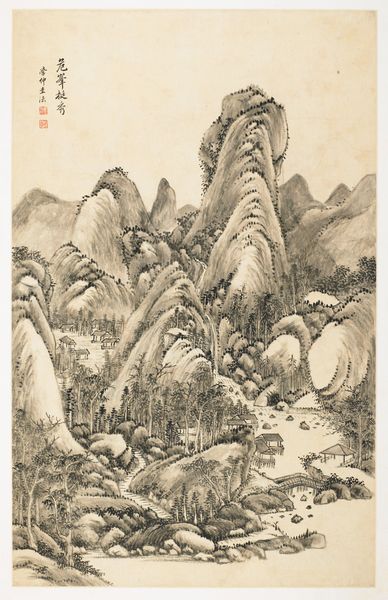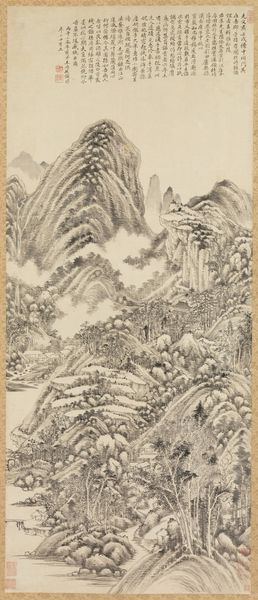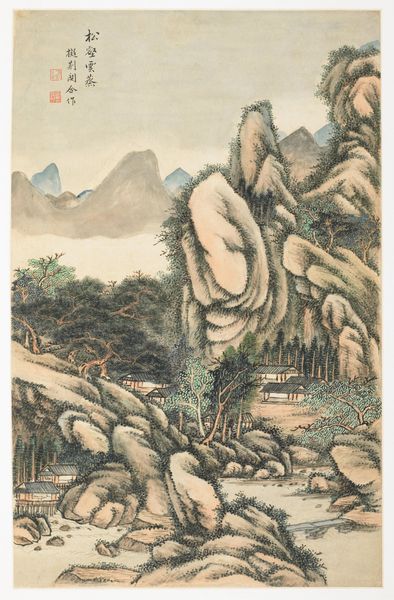
drawing, ink
#
drawing
#
asian-art
#
landscape
#
ink
#
coloured pencil
#
china
Dimensions: 21 3/4 x 13 in. (55.25 x 33.02 cm) (image)
Copyright: Public Domain
Editor: This is “Spring Tree Grove Before Rain” by Jin Yongxi, dating back to 1723. It’s an ink drawing, and I find the monochromatic palette quite calming. How do you read this landscape? Curator: This work operates within a rich tradition of Chinese landscape painting, often seen as more than just scenery. How do you think the literati of the time viewed art's function, especially concerning nature? Editor: Hmm, I imagine landscape paintings were perhaps more symbolic than realistic... like a way of contemplating bigger ideas? Curator: Precisely! For the educated elite, paintings like this were deeply tied to their socio-political positions and philosophical beliefs. Landscapes served as a reflection of societal harmony, the Emperor’s rule, or even personal refuge during times of political turmoil. Do you see any clues to a specific message here? Editor: Maybe the two small buildings. They could imply people peacefully existing within the grand scheme of nature and Imperial order. It makes you think about hierarchy and Confucianism, doesn't it? Curator: Exactly! Jin Yongxi doesn't just show us pretty mountains; he places humanity within a cosmic framework, reaffirming established social structures and perhaps the desire for simpler lives amid political complexities. Editor: I see. It’s interesting how a seemingly simple landscape can reveal such intricate layers of meaning when considering the context it was created in. Curator: Yes, the painting embodies cultural and societal norms. Art is more than what meets the eye – it is interwoven into the fabric of the world around it.
Comments
No comments
Be the first to comment and join the conversation on the ultimate creative platform.
